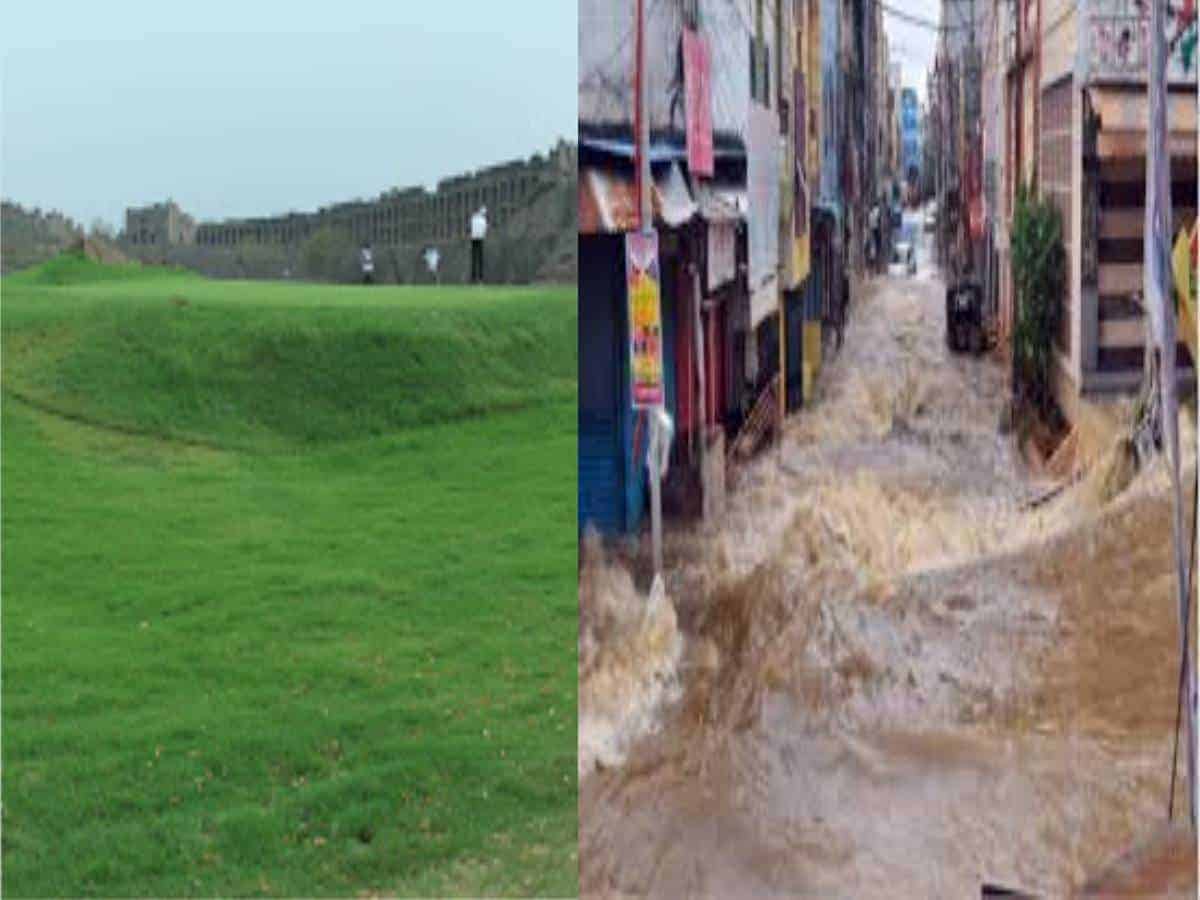Hyderabad: At the time when Telangana state is already reeling under the impact of the COVID-19 pandemic, incessant rains last week which lashed Hyderabad last week added to existing woes—both financially and emotionally.
The heavy rains had unleashed havoc and the ensuing floods caused destruction across various areas in the city, among which Tolichowki under the Karwan Constituency has been one of the most affected. Many localities were flooded, especially Nadeem Colony and Nizam Colony, which are still partially inundated in water.
Nadeem Colony, for example, came up as an encroachment on the historic Shah Hatim Talab (which), which is a Qutb Shahi (Golconda) era (1518-1687) water body. Each year when it rains, houses in the colony get flooded, which is a direct consequence of constructing homes in the full tank level of the lake.
This time, with the city witnessing as high 35 centimetres of rain, water from the Shah Hatim lake, which became full, literally submerged homes nearby.
Watch: what the residents have to say on the Siasat Daily YouTube
Shah Hatim Lake encroached with constructions and the adjacent ‘Naya Qila’ area partially taken over by the Hyderabad Golf Course
A rather lesser known part of the Golconda fort is the Naya Qila, which was essentially built by Sultan Abudllah Qutb Shah, the sixth Golconda king, as further defence against Mughal armies after the first Mughal attack on Hyderabad in 1656.
This integral part of the Golkonda fort, which was inhabited by people much before 1656 itself, also contains many historic structures like the Laila and Majnu bastions, the ‘Hathiyon ka Jhaad’ (Baobab tree), the Mustafa Khan and the Mulla Khyali Masjids.
Adjacent to the Naya Qila’s boundary wall is the Shah Hatim Talab. One can stand on the bastions of Naya Qila and see the lake, part of which flows into the Naya Qila, through a water channel which also flows into the golf course that came up about a decade ago.
The Hyderabad Golf Course Association is a powerful lobby, given that most of its patrons are IPS and IAS officers, apart from other many prominent personalities being part of it. The area is now separate from the Golconda fort, as hundreds of houses have been built within the fort area, all of which are technically encroachments, as construction is not permitted around historical monuments as per rules of the Archaeological Survey of India (ASI), the custodian of the Golconda fort.

However, locals contend that construction of the Hyderabad golf Course (around 2010) inside the Naya Qila premises led to the illegal encroachment. Residents allege that the original outlet of the lake leads into the Hyderabad Golf Club, and want it to be opened immediately.
While there is definitely a water channel going into the golf course area, it may be noted until some decades ago, people had been farming in those areas, and only a stream from the lake goes into the golf course. Even if their claim is correct, is is also a fact that locals have encroached and built homes in the full tank level of the Shah Hatim lake as well.
The incessant rains that hit Hyderabad on October 13 flooded almost every place. Local residents alleged that local authorities let the excess water flow into the localities, rather than its actual outlet: the Hyderabad golf Club, which was closed.
A local said, “Luxury as in the golf club is only for the rich and it is poor people like us who have to suffer just. The golf club released the water into our homes.”
The Hyderabad Golf Club’s construction was opposed by locals
The construction of the Hyderabad golf Course in the Naya Qila area met with a lot of resistance from various NGOs and organisations when the plans to build it were first floated in the 1990s. In fact, until some years ago, entry to the Naya Qila was barred, until an Right to Information (RTI) response from the ASI said it is open for anyone to visit.
According to people living nearby, the golf course and the almost exclusive access given to its members was against the proper use of heritage sites, as such spaces should have ownership of the public at large.
There were also protests organised by the farmers who were displaced by the construction of the golf course then. They were eventually offered land in other parts of the city in return after which they left. The controversy regarding this historic land, which was turned into a private golf course, can also be used to look at the larger picture with regard to our heritage.
Activists and historians, for example, have also censured the ‘Adopt a Heritage’ scheme of the Government of India, under which the Dalmia Bharat Private Limited was allowed to ‘adopt’ the Red Fort. There have also been concerns regarding the negative ecological implications of the golf course at Naya Qila, outlined in a comprehensive document shared by the NGO, Better Hyderabad.

